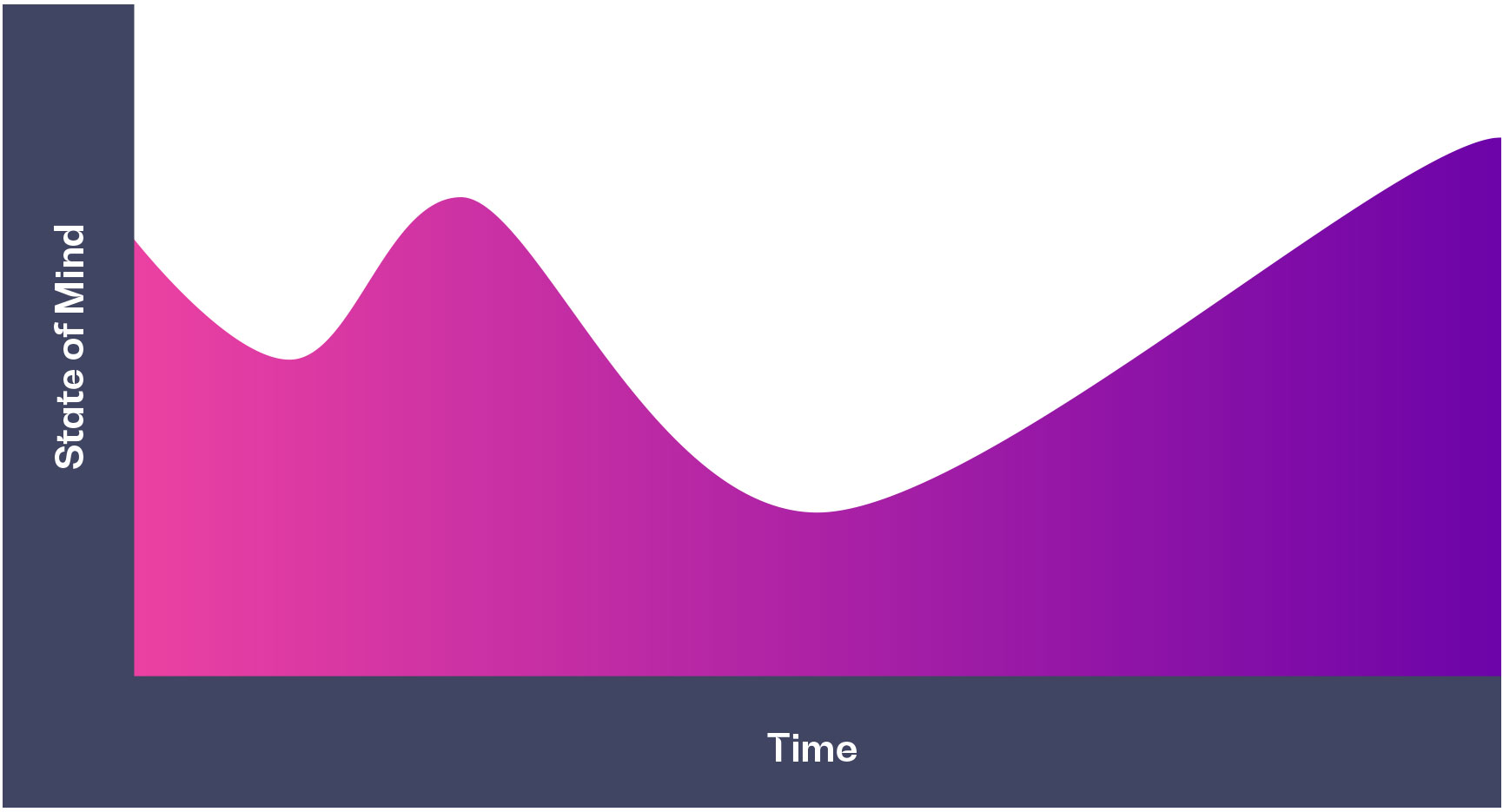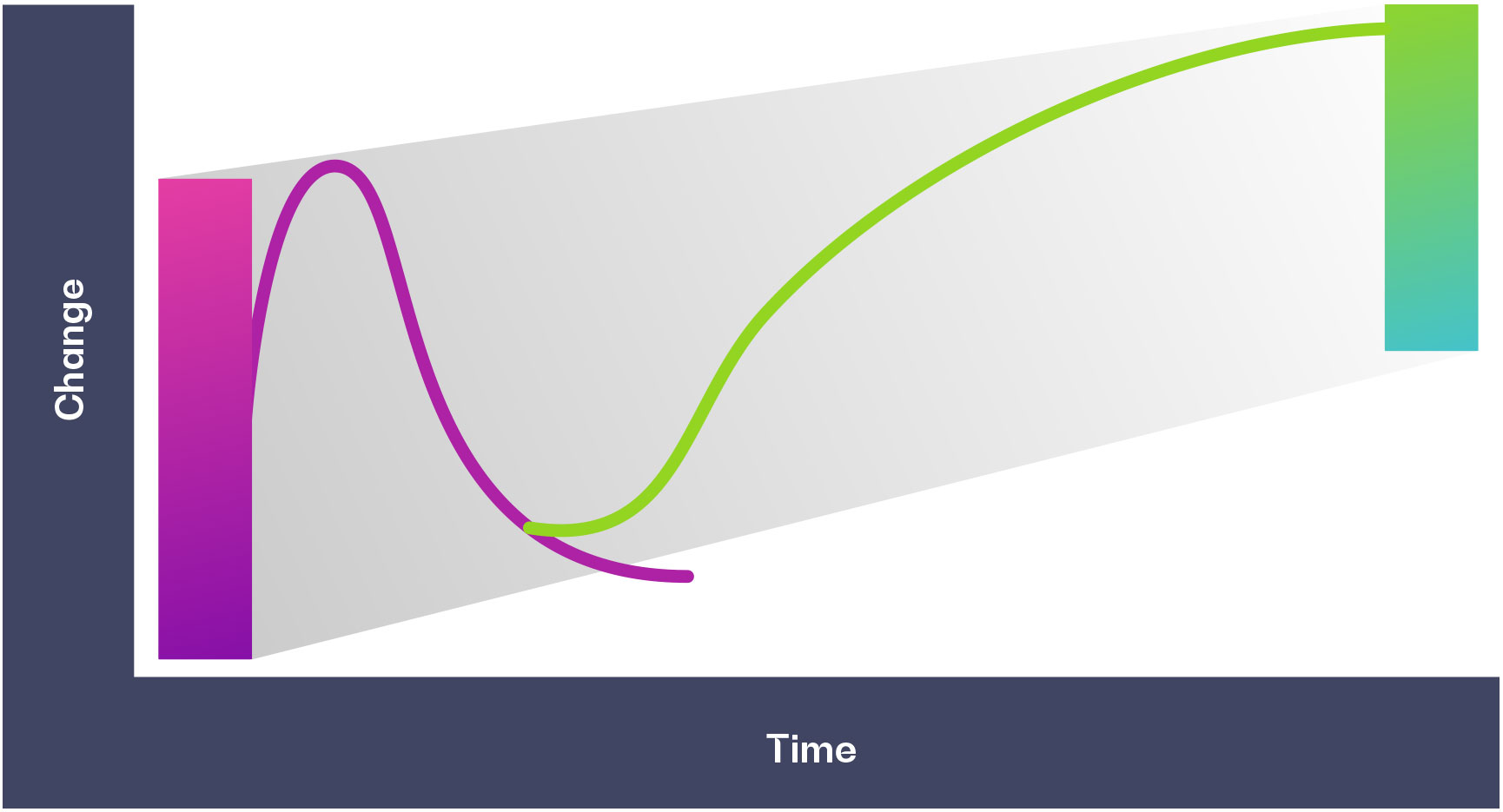Change Management
Change can be big or small, significant or insignificant. People react to change in a variety of ways and may go through different emotions as the change takes place.
Change management is not linear – we are talking about human behaviour. Just like people are both rationally and emotionally engaged, they react both rationally and emotionally to change.
Good managers look ahead; anticipating the change and managing it. Change becomes part of what they do automatically. It’s not just something that only happens when a big initiative comes along. They will adapt and respond quickly and efficiently to all aspects of change, big or small, because what’s small to one person, could be big to another.
And that’s the part that really matters when it comes to change; everyone responds in a different way and at a different speed. Being sensitive to that is the key to effective change management.
How to support people through change
In order to support and manage people through periods of change within an organisation, it is important to understand how others react to change. To do this it is useful to think about how you cope with change.
Personal Changes
Think about some of the changes you have experienced in your life:
-
- Moving house
- New job
-
- Marriage
- Leaving home
-
- Redundancy
Organisational Changes
People often think organizational changes involve large changes, e.g.: re-structuring, personnel changes, introduction of new systems. However, small scale changes within organisations can also have an impact on people’s morale and performance:
-
- A new Team Leader
- New team colleague
- An office move
-
- New responsibilities
- Moving desks
-
- New processes
- New systems
Communicating Change
It is critical for Team Leaders to be comfortable with the changes they wish to implement or that their organisation is undergoing. They need to have a good understanding of the reasons for change and to be able to communicate the benefits. With the majority of well-structured change there will be positive benefits for the organisation, site and teams. A Team Leader who maximises the opportunities to promote the positive elements of change will experience the least resistance.
Below are a few areas you may want to consider when communicating change:
- Prepare well before communicating any change.
- Be clear and honest about what’s changing and why.
- Consider the emotional impact of the change.
- Tell employees what’s in it for them.
- Explain how the change will happen.
- Tell employees what they need to do.
- Open two-way communication channels and consider if regular communication briefings will support the change.
Your reactions affect others
As a Team Leader you need to act with care to ensure that the team observes your commitment to the change. As a role model you are likely to encourage similar behaviours within your team.
As a Team Leaders, you need to show a positive approach to the change and support your team. During any change process the individuals within the team are likely to react in different ways. It is therefore important for you to counsel and coach each individual in a way which is appropriate to their reactions. Always remember that you are moving the team from one comfort zone to another. Reinforcing the benefits of change will always help the transition.
If you appear apprehensive and concerned about the change, you are likely to see similar reactions reflected in your team.
The Change Cycle Explained
Below is a graph derived from the work of Elizabeth Kubler Ross who studied people’s reactions to bereavement and loss. She found that in many cases people go through a similar cycle of emotions, although people take different amounts of time to go through each stage.

Shock
Denial
Frustration
Depression
Experiments
Decisions
Integration/
Acceptance
Shock – Shock and surprised in response to an event: “I can’t believe it”. This is when the reality of the change first hits home.
Denial – Denial of the change and therefore you find ways to prove it isn’t happening, stick your head in the sand, and reassure yourself it is not happening.
Frustration – On the way down: anger, blame culture, showing frustration, still not accepting – “Why pick on me?”.
Depression – Hitting rock bottom, experiencing depression and apathy. Everything seems pointless: “Why bother?” and “I’m ready to give up”.
Experiment – The previous stage is so bad that we begin to pull ourselves out. This is where begin to accept new ideas: “I think I will have a go”, “how will my job look after the change?”.
Decisions – Deciding what works and what doesn’t. Beginning to not only accept the change but to embrace it and feeling more optimistic. “This isn’t so bad after all, it actually seems to be working”.
Integration/Acceptance – You will be integrating the new change into your life, it is part of the norm: “The new me”.
Whether change is positive, unwelcome or unknown, research has shown that individuals respond to change in a similar way. This reaction is illustrated in the change curve diagram, which shows the range of feelings and emotions people typically go through during the course of a change.
The Change Cycle at Work
Since the publication of her work, research was carried out into how people react to change at work and it was found that individuals go through a very similar cycle of emotions and reactions in response to organisational change:

P1
P2
P3
P4
A1
A2
Explanation of the organisational model
P1 – This represents where the organisation is today with varying levels of acceptance to change.
P2 – This represents where the organisation would like to get to, this is usually to make improvements and ensure that change is accepted throughout the organisation.
P3 – This line represents the emotion of pain; this is a typical emotion that is experienced during any organisational change.
P4 – This line represents the emotion of pleasure, as seen in the exercise on pages 2 and 3, this is another emotion experienced during organisational change.
A1 – This is a change cycle where change is not accepted: the first stages are the same for when change is accepted at the outset of change emotions will typically be neutral with maybe a mixed reaction the change is publicised, but little is happening on the ground. There is general acceptance, with positive and pleasurable emotions as the change becomes imminent and starts to take place there are usually negative emotions. A rejection of the change starts to occur and the change cycle will slow without any positive reinforcement and drive forward of the changes, the organisation will eventually terminate the change. People are then left with negative feelings and the organisation is left in an undesirable state.
A2 – Where the change is accepted: you will find that exactly the same emotions are experienced as in the cycle described above; however, the key difference is in the level of commitment and support that is given to the change. An effective change manager will recognise the different emotions and manage their staff through support and encouragement another key factor is that the pace of change needs to be maintained so that individuals have little time to dwell on the negatives once the change has been completed and commitment is maintained, then the usual outcome is positive. The organisation then reaches a new level and starts to enjoy the key benefits of the change.


